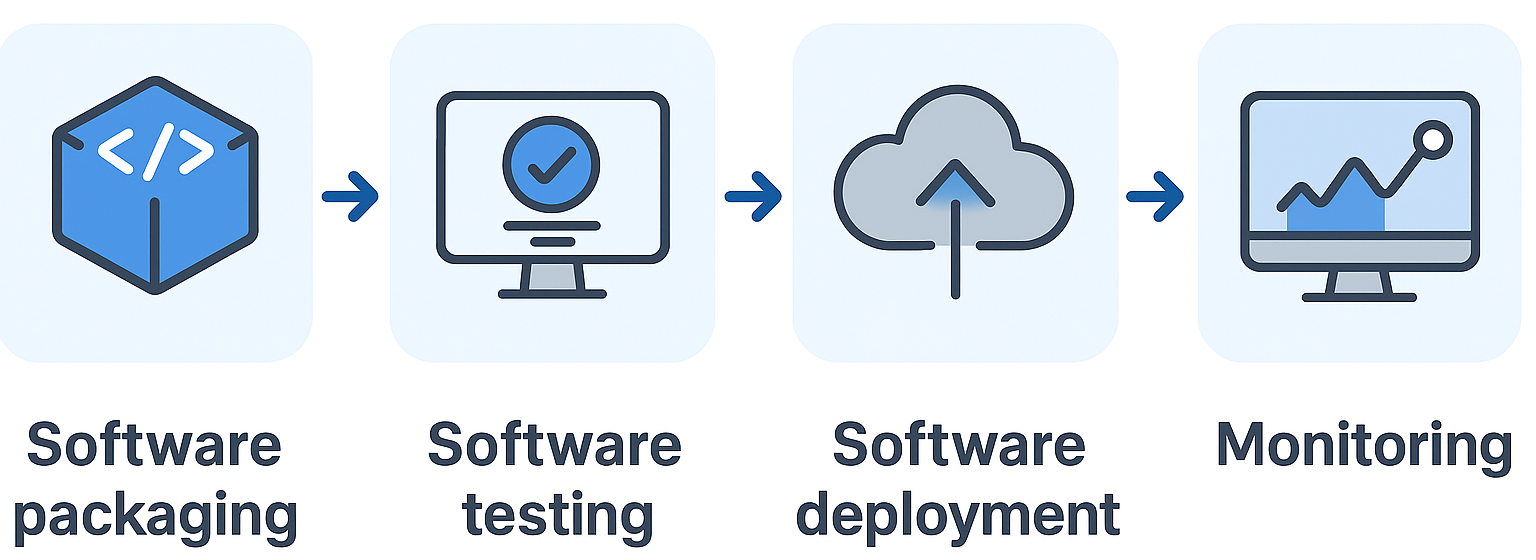The Essential Software Deployment Checklist and Best Practices
In a previous article, we covered the software packaging and testing checklist, along with best practices for follow up.
In this article, I will cover the next phase of a software lifecycle in an enterprise environment: software deployment.

Why You Need a Deployment Checklist

We are only humans, and it's in our nature to make mistakes. It happens to the best of us. Having a software deployment checklist will ensure that you cover all the points and have a smoother, less risky deployment.
A faulty deployment can result in numerous support tickets, an overloaded network, and, worst case, the stoppage of critical systems.
Separate teams and different people may handle the software packaging and software deployment across multiple enterprise environments. Sometimes things can be overlooked during the software packaging process, so having common points to verify in the deployment phase is a good and healthy practice.
Now, let’s dive into the checklist.
Software Deployment Checklist 

- Deployment action is approved by the change manager
- The software to be deployed had been packaged and tested internally before deployment
- Source files are present in an accessible location
- Install and uninstall commands have been received from the packaging team
- Detection method information has been received from the packaging team
- Install context information has been received from the packaging team (install in system context or user context)
- Distribution and availability of the software are known before deployment
- Internal UAT (user acceptance test) is done successfully
- The pilot deployment group is designated, and the people involved have been notified about receiving the software
- Deployment to the pilot group is a success, and the pilot users confirmed the software works as expected
- Deployment to production strategy is established
- Production deployment groups are defined
- Deploy to production groups based on the defined strategy: all at once, outside business hours, or phased deployments
- Monitor deployment status
Detailed Checkpoint Explanation

Deployment action is approved by the change manager
A formal change request has been submitted, reviewed, and approved by the change manager or CAB, including details such as impact, risk, and rollback strategy, with documented approval before proceeding.
The software to be deployed had been packaged and tested internally before deployment
The deployment package has been successfully built by the packaging team and thoroughly tested in a controlled environment to ensure correct installation, functionality, and clean uninstallation.
Source files are present in an accessible location
All source files needed for deployment are stored on a validated network share, distribution point, or cloud location with verified access for deployment tools and systems.
Install and uninstall commands have been received from the packaging team
The packaging team has received and confirmed the silent install and uninstall commands, complete with necessary switches, to work as intended during internal testing.
Detection method information has been received from the packaging team
The packaging team has provided the detection method (e.g., file, registry, product code), which is tested and confirmed to detect the software’s presence on target systems.
Install context information has been received from the packaging team (install in system context or user context)
It has been confirmed whether the software should be installed in system or user context, ensuring the correct deployment behavior and permissions based on the application's scope.
Distribution and availability of the software are known before deployment
The application content is distributed to all relevant distribution points or uploaded to Intune and verified as available to all targeted groups before initiating deployment.
Internal UAT (user acceptance test) is done successfully
The software has passed internal user acceptance testing, with selected users confirming that installation, usability, and functionality meet expectations in a real-world scenario.
The pilot deployment group is designated, and the people involved have been notified about receiving the software
A defined group of pilot users has been selected, informed about the deployment schedule, and briefed on how to provide feedback or report issues during the pilot phase.
Deployment to the pilot group is a success, and the pilot users confirmed the software works as expected
Deployment to pilot users was completed without errors, and feedback confirms the software installs and operates correctly, with no critical issues reported.
Deployment to production strategy is established
A clear strategy for production rollout is established, detailing whether the deployment will be done all at once, in phases, or outside of business hours, based on business needs and risk assessment.
Production deployment groups are defined
Production deployment groups are logically organized by factors like department or location, ensuring accurate targeting and controlled rollout.
Deploy to production groups based on the defined strategy
Deployment is carried out in alignment with the chosen plan, respecting maintenance windows and scheduling constraints to minimize disruption: all at once, outside business hours, or phased deployments.
Monitor deployment status
Deployment is actively monitored using SCCM or Intune dashboards and logs, with close attention to success rates, error messages, and client feedback to address any issues promptly.
Conclusion

At the end of the day, a great deployment checklist isn’t just a to-do list. It’s all about peace of mind, since its purpose is to prevent unnecessary headaches and issues that may occur along the way.
After all, the smoother the rollout, the sooner you can get back to focusing on the next project.
Consider trying Advanced Installer for free; no credit card is needed. Check out our comprehensive features list.
FAQs
Why do I need a deployment checklist if the software was already tested?

A checklist helps ensure that teams do not overlook anything, especially when different teams handle packaging and deployment.
What does "install context" mean, and why do we consider it important? 

Install context tells you whether the software should install for the system (all users on the machine) or just the current user. It’s important because the wrong context can cause the app not to run properly, or it doesn't appear at all for the end user.
Why is a pilot deployment group necessary?

A pilot group acts as your early test users. Before rolling out to everyone, you check the application deployment and functionality with a small, informed group. If anything breaks, it happens in a controlled environment, not across the entire company.
